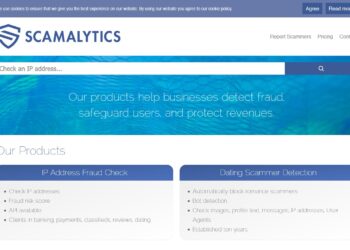Remote work, given the opportunity, has always been the primary choice of most employees. But, during the last two years, it has only risen in popularity and convenience due to the COVID-19 pandemic. As every exemplary setup has its downsides, remote work is also not an exception.
With the inception of remote work, companies started to notice a pattern among employees that wasn’t prevalent before. They started to grow sloppy towards the cybersecurity aspect. So, experts took new rigorous measures to ensure the safety of employees and the companies.
1. Risk of Public Wi-Fi:
As a business, you must’ve dissuaded your employees from using public Wi-Fi and they are likely to maintain the order. But, one of the perks of remote work is the aspect of remoteness itself. They might take their office laptop to access the portals while sipping on a latte.
It may seem harmless at this moment, but connecting to a public network reveals their SSID. An attacker can use that to emulate a trusted network to grant access to their data.
Leaving Wi-Fi on while on the move also leaves them in a position of vulnerability. Ransomware attacks are on the rise due to this single fundamental sloppiness employees are allowing themselves to slip into.
Malicious codes can be planted by an attacker to the device of your employee if granted access.
Engaging Multi-Layered Operations:
A major security incident is not going to happen every time your employees connect to public networks. But it only takes a single rogue mind and a malicious network to execute the most notorious attacks.
Make VPN a must for all your employees, including yourself. A VPN directs the internal traffic through several different servers before reaching the destination. It’s similar to residential proxy from Rayobyte where the goal is to increase security while browsing the web.
A residential proxy allows you to choose a specific location and log into the web as if you’re in that area. It masks your real IP address and acts like a gateway that will confuse perpetrators when they try to hack your device.
The use of proxies and VPNs ensures that even if an attack occurs, the probability of a successful one reduces to a minimum. Make sure that your employees are well vetted and know the risks of connecting to public Wi-Fi with their work devices.
2. Using Personal Devices:
The rise of remote work achieved great feats. But it was unable to prevent professionals from accessing their work from personal devices. Which can or can’t be a good thing depending on how you pursue it.
Workaholic employees often use their personal devices to maximize their value. At the same time, they pose plenty of cybersecurity risks by making ignorant decisions.
A survey showed that 90% of companies grant access to the personal devices of their employees. The more devices you have on your network, the more you are at risk.
Typically, personal devices are not as secure as work ones. Due to the absence of regulations and limitations that a work device might have, your employees risk getting cyber attacked.
Your employees might have malware on their mobile, or their devices could get stolen. Every sloppy slope poses security risks.
Training Employees:
Just a one-time careless cybersecurity training isn’t enough in most cases. It’s proven that employees who don’t get sufficient training on cybersecurity tend to break more rules. Those who get ample opportunities to learn about the risks, make fewer mistakes. Making your employees understand the security risks could be the key to safeguarding your business.
3. Physical Security Practices and Remote Work:
It would be criminal to disregard the fact that some of your employees might be working from a cafe or a shared workspace. The basic human asset risks are always present in these types of environments.
Talking loudly, leaving the device unlocked, overhearing of OTPs, and leaking information are major threats to the security of a company.
Additionally, if they use their personal devices to access the company domain, it’s possible that
- It might get stolen.
- Keyloggers and Screen scrapers get installed.
- Attempts to intercept ID and Passwords be made.
Raising Awareness:
Often what seems like common sense, is not so common. Educating your employees about the risks associated with the accidental revelation of their work should help secure the servers better.
It’s amusing how attacks are now mostly based on social engineering and can be executed without technical knowledge. A cyberattacker, given access to personal data, can pose as your employee and gain access.
4. Video Conferences:
Frontdesk prevents the entry of strangers on the campus. But, despite having various screening measures, we’ve seen in recent dates that sabotage is pretty common during video conferences.
Leaked employee information, product briefs, and secret policies can be used to manipulate or blackmail employees and companies. It’s your duty as an employer to get your employees educated about risk mitigation strategies.
As most of the video conferences aren’t end-to-end encrypted, if you are not discussing crucial details over a Zoom call, you should be fine.
But… If not a video conference, then what? As crucial as video conferences are, there are security measures present to preserve the sanity of video conferences.Prevention of Sabotage:
- Protect every meeting that you commence through video conferencing apps with passwords. Only distribute the passwords through secure means.
- Admins are required to join first and allow access to everyone with credentials.
- Lock admission after everyone joins the conference.
- Be aware of meeting forwards and set up alerts for the same.
- Do not share files in the chat. As the conferences aren’t well encrypted, sharing files can possess security risks.
- Prevent recordings to happen. Encourage employees to take notes or send them emails with the synopsis of every conference.
5. Remote Work, Encryption, and Cybersecurity:
Encryption makes sure only the authorized parties have access to the data shared. Remote work employees often share professional files with their personal devices. This mitigates the encryption policies enforced by the company.
Although it’s unlikely that an attacker will be able to crack the VPN server easily. But it’s not very uncommon for them to reach the devices your employees are using to breach the servers.
The Bottom Line
You need to remain innovative and understanding when allowing employees to work remotely. While remote work remains the most sought out work requirement, it’s not without its downsides.
First of all, employees should not be using public Wi-Fi and personal devices. Second, they should also remember to not share sensitive data through public mediums. Enforce your policies strictly and educate the employees thoroughly to get the most out of the situation.






